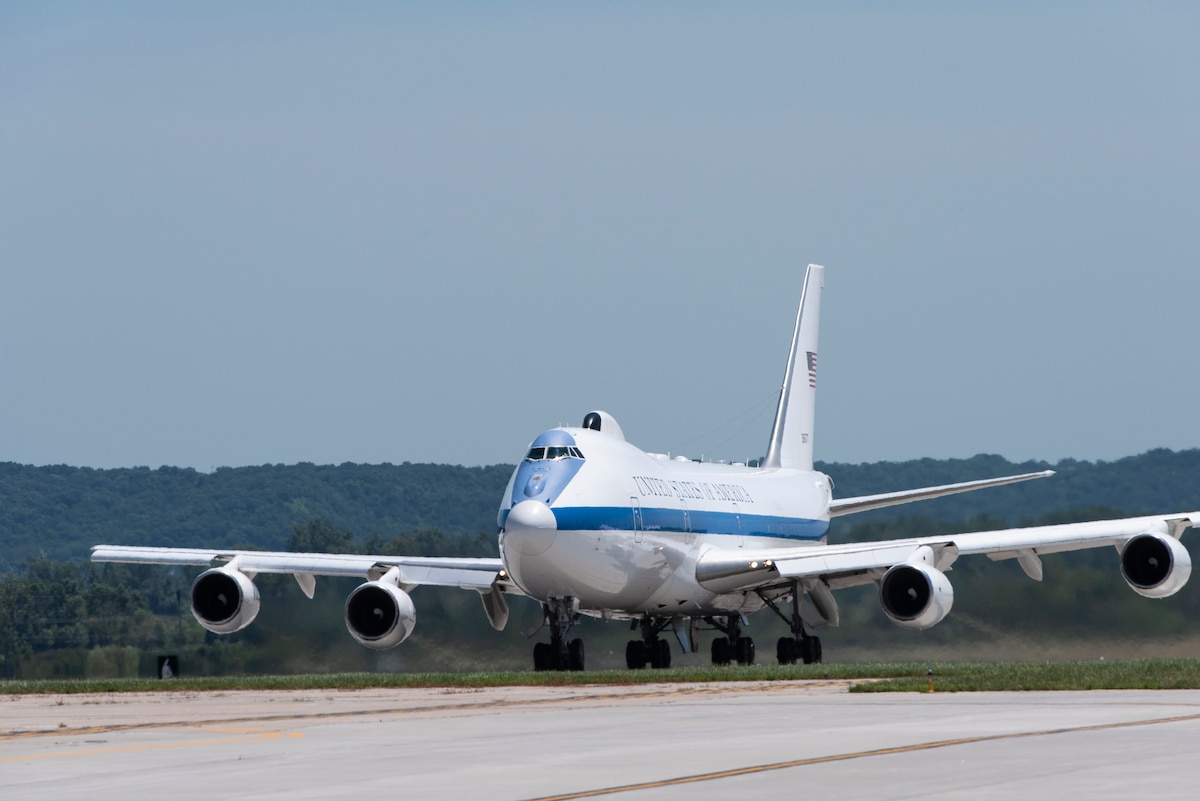American aerospace and defense giant Boeing announced late last week that it is no longer in the US Air Force’s competition to produce the ‘Doomsday’ aircraft, which will replace the iconic E-4B Nightwatch.
This development upends the competition to build the next iteration of the Doomsday aircraft, which derives its name from its purported capability to withstand nuclear war. Reuters initially reported the ouster of Boeing from the program, which has led to a situation where there is just one manufacturer in the contest now.
The only openly competing business for the Survivable Airborne Operations Center (SAOC) contract is the privately held defense contractor Sierra Nevada Corp. On its part, the US Air Force (USAF) stopped short of specifying whether other companies have also submitted their bids.
A USAF spokesperson said, “We cannot discuss an active source selection, and detailed program information is classified.” The contract is slated for allotment to a defense contractor sometime in 2024.
The Air Force and Boeing, the current manufacturer of the E-4B, reportedly couldn’t agree on data rights and contract terms, according to two people familiar with the matter. Boeing, in particular, refused to sign any fixed-price agreement that would have required it to pay costs over a predetermined threshold.

“We are approaching all new contract opportunities with added discipline to ensure we can meet our commitments and support the long-term health of our business,” a Boeing statement said. “We remain confident our SAOC approach is the most comprehensive, technically mature, and lowest-risk solution for the customer and Boeing.”
Budget records show that the Air Force intends to continue developing SOAC, spending US$889 million in fiscal 2024 and US$8.3 billion through fiscal 2028. The E-4B, which the Doomsday aircraft is expected to replace, currently serves as the National Airborne Operations Center and is a vital component of the National Military Command System for the President, the Secretary of Defense, and the Joint Chiefs of Staff.
What Is The New Doomsday Aircraft Like?
The current doomsday aircraft of the US Air Force, the E-4B Nightwatcher, functions as a mobile command post that can withstand electromagnetic effects and nuclear bombs, allowing US officials to deliver commands to the military in case of an emergency.
The aircraft provides a highly survivable command, control, and communications center to lead US forces, carry out emergency war orders, and coordinate operations by civil authorities in the event of a national emergency or the destruction of ground command and control centers. E-4B activities are conducted across the entire spectrum of threats.
The E-4B has an electrical system built to support cutting-edge electronics and a broad range of communications equipment, and it is shielded against the effects of electromagnetic pulses. Senior leaders can communicate globally via an innovative satellite communications system via the airborne operations center.
Additional enhancements include insulation against radioactive and thermal impacts, acoustic control, a better technical control center, and an improved air conditioning system to cool electrical parts.

Although the specifications for the upcoming SAOCs are still heavily classified, information is starting to surface that indicates the aircraft the service is looking for will resemble the current Boeing 747-based E-4Bs in terms of size and general configuration, including four engines.
A contractual notice addressing the program was released on February 17, 2021, by the Presidential Airlift Directorate of the Air Force Life Cycle Management Center (AFLCMC), which oversees the SAOC initiative. It stated, ”The Government intends to continue to pursue a full and open acquisition strategy for the entire weapon system using a huge platform.”
Often called “Doomsday Planes,” the primary purpose of the Air Force’s four operational E-4Bs is to furnish a resilient and airborne command post that provides the President of the United States with a platform to launch a nuclear strike through a mechanism known as the National Command Authority (NCA).
The two presidents who have publicly flown in the E-4B are Presidents Carter and Ronald Reagan. Secretary Austin exclusively uses the E-4B for foreign travel because of periodic upgrades and 30-day periods of extensive maintenance that remove jets from an already constrained rotation.
It can accommodate a crew of sixty-five soldiers, ranging from highly experienced pilots to recent technical school graduates operating communications systems. The aircrew includes flight attendants, security personnel, navigators, and flight engineers.
Despite being one of the Air Force’s oldest platforms, it has one of the most sophisticated and varied data transmission and audiovisual equipment suites.
Currently, the USAF operates four E-4B aircraft, of which at least one is always on alert. These heavily modified Boeing 747-200 jumbo jets were first flown in the 1970s, and as parts wear out, maintenance on them gets more complex and expensive. It has been estimated that the aircraft will be near the completion of its service life by the early 2030s.
Thus, developing a plane that serves as a replacement for this iconic aircraft becomes imperative. This is where the brand-new Doomsday plane comes into the picture. However, with Boeing out of the competition now, it is not clear whether the solo bidder would get the contract.
- Contact the author at sakshi.tiwari9555(at)gmail.com
- Follow EurAsian Times on Google News




